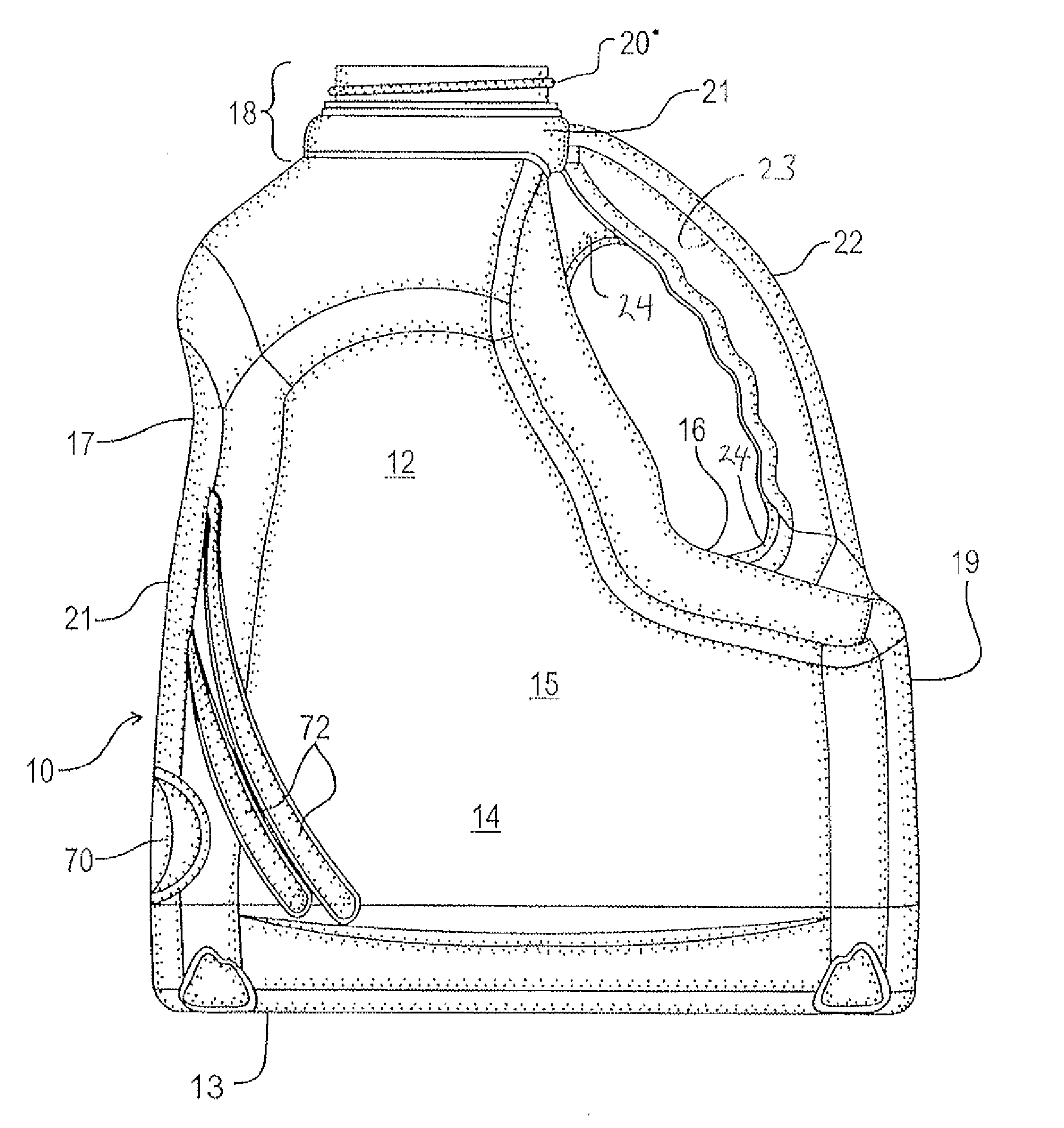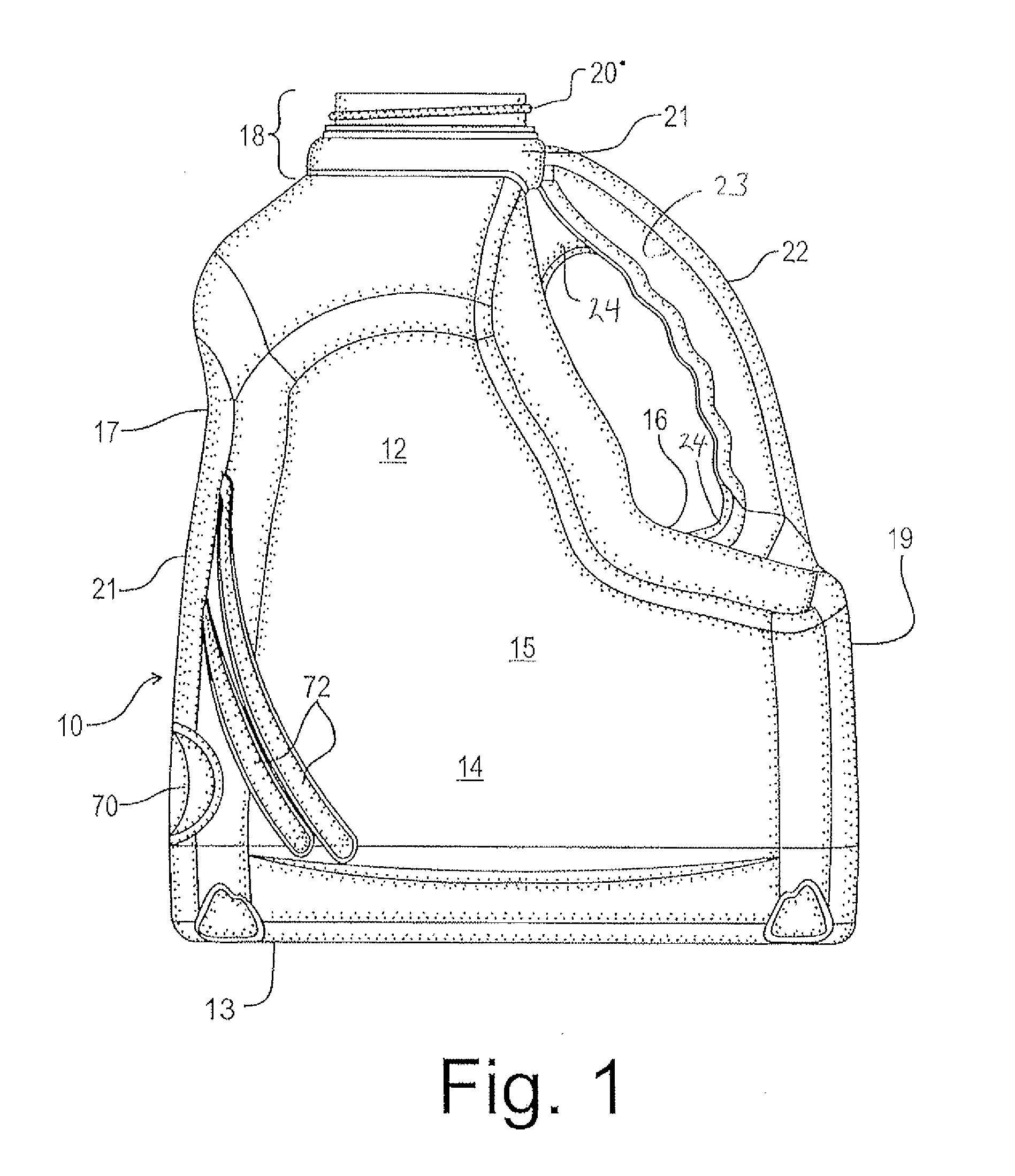Bottle and cap with Anti-glug feature
a technology of bottle cap and anti-glug, which is applied in the direction of caps, containers preventing decay, instruments, etc., can solve the problems of glugging, irregular flow, splashing and slow pouring, and the problem of more pronounced problems, so as to achieve precise positioning of the cap and effectively seal the bottle
- Summary
- Abstract
- Description
- Claims
- Application Information
AI Technical Summary
Benefits of technology
Problems solved by technology
Method used
Image
Examples
Embodiment Construction
[0022]Referring to the figures, with particular reference to FIG. 1, the bottle 10 comprises moulded plastic which may comprise any conventional, suitably rigid or semi-rigid plastic, having a hollow interior for holding a liquid. For ease of description, the bottle is arbitrarily divided into upper and lower regions 12 and 14 respectively. The upper region 12 is inwardly-stepped from the lower region 14 at a shoulder 16 so as to provide a cutaway portion or recess on one side of the bottle to accommodate the user's hand when gripping the handle, described below. The upper region 12 tapers inwardly towards an elongate upstanding neck 18. The upper portion of the neck having external screw threads 20. The collar 21 is larger in diameter than the neck 18; since the air passage, described below, communicates with the bottle interior at the collar 21, the increased diameter of the collar serves to improve airflow characteristics. The lower portion of the neck 18 comprises a collar 21 wh...
PUM
 Login to View More
Login to View More Abstract
Description
Claims
Application Information
 Login to View More
Login to View More - R&D
- Intellectual Property
- Life Sciences
- Materials
- Tech Scout
- Unparalleled Data Quality
- Higher Quality Content
- 60% Fewer Hallucinations
Browse by: Latest US Patents, China's latest patents, Technical Efficacy Thesaurus, Application Domain, Technology Topic, Popular Technical Reports.
© 2025 PatSnap. All rights reserved.Legal|Privacy policy|Modern Slavery Act Transparency Statement|Sitemap|About US| Contact US: help@patsnap.com



